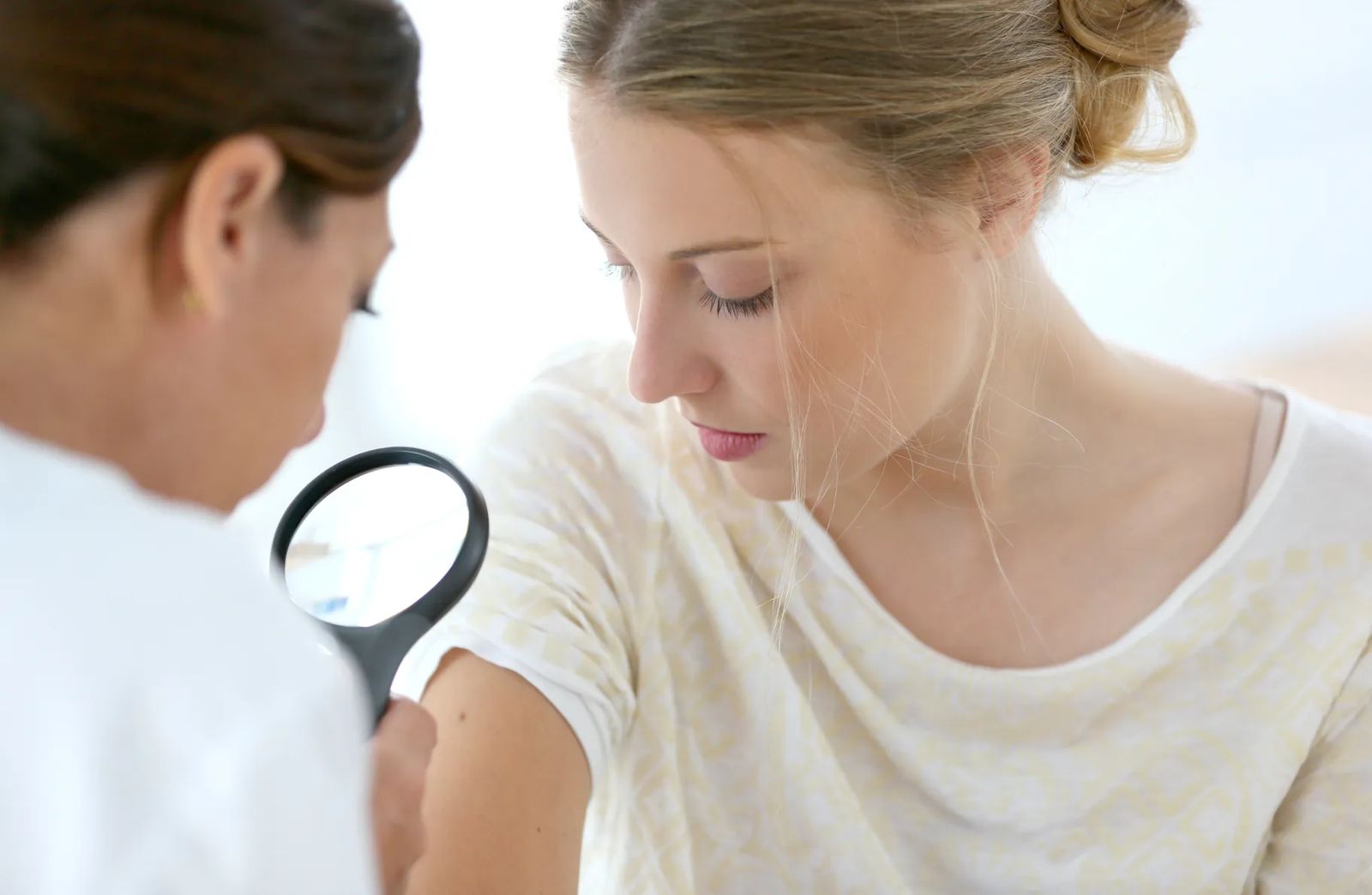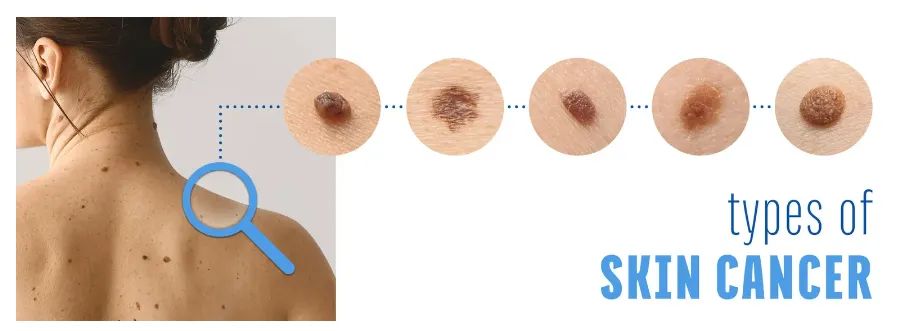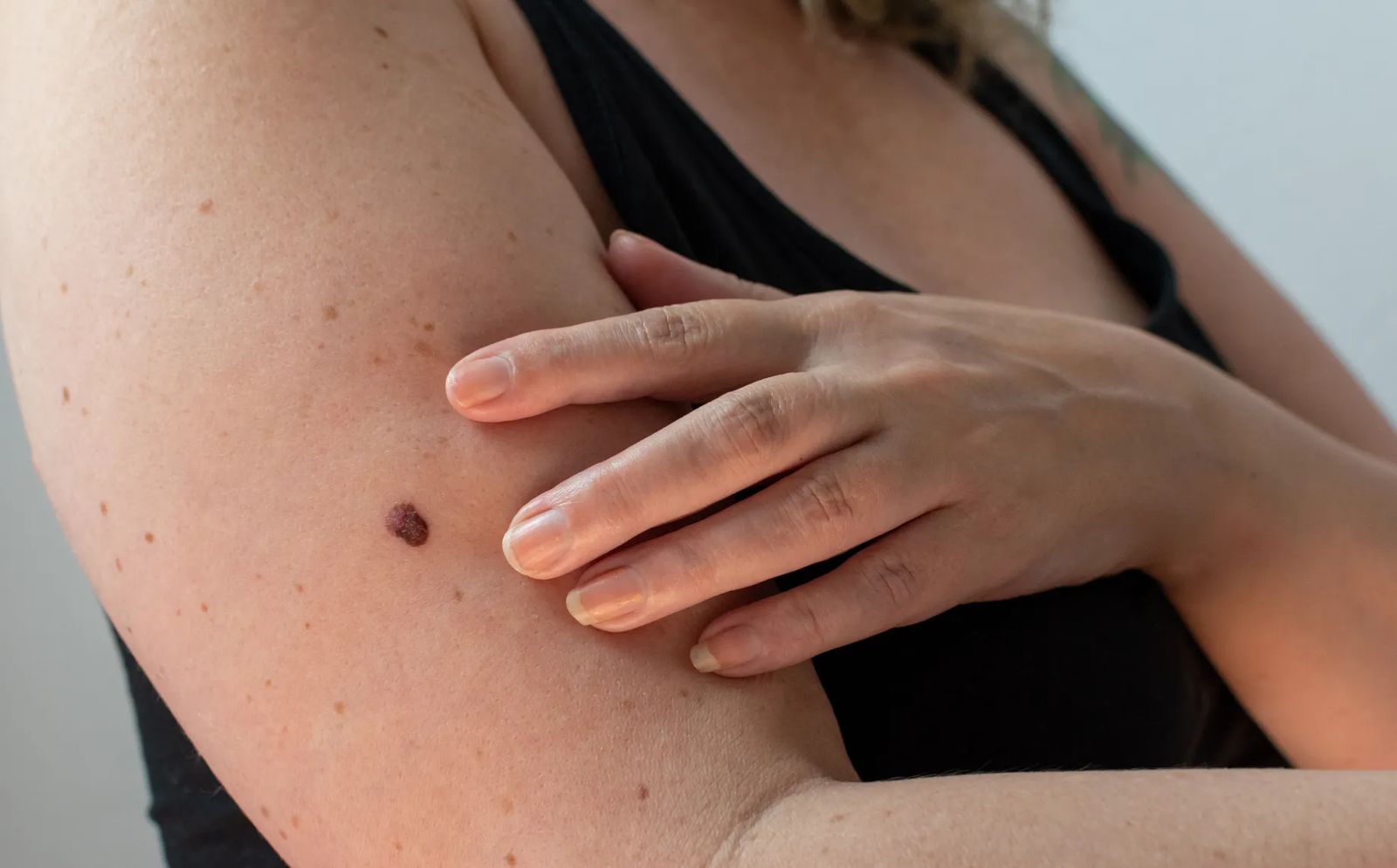
No Fun in the Sun
Knowing the Signs of Skin Cancer
St. Vincent Regional Hospital
Summer is here, which means warmer weather, more outdoor activities, and longer hours in the sun. Basking in the heat this time of year is tempting, but without proper protection, you may become one of the estimated 6.1 million Americans diagnosed with skin cancer each year.
With skin cancer totaling the highest U.S. cancer rates, knowing the different types and how to prevent them is the difference between fun and not-so-fun in the sun.
Samuel Reck, MD, Dermatologist at St. Vincent Regional Hospital shares the differences between melanoma, basal cell carcinoma (BCC), and squamous cell carcinoma (SCC), and the ways to avoid them.

TYPES OF SKIN CANCER
At a baseline, skin cancer is a condition where abnormal cells grow uncontrollably in the skin. It's often caused by exposure to ultraviolet (UV) radiation from the sun or tanning beds.
“You can get all types of skin cancer anywhere on the body, so it is always best to look,” said Dr. Reck.
There are several types of skin cancer, including basal cell carcinoma, squamous cell carcinoma, and melanoma. According to Dr. Reck, these cancers all start at the top layer of your skin, and help define the cancer types.
These cancers come from the layer of skin called epidermis, which has different types of cells such as melanocytes, which give pigment to the skin, squamous cells, which are your top few layers of flat cells, and basal cells, which form the lowermost layer of cells that form the epidermis.

DR. SAMUEL RECK, DERMATOLOGIST
BASAL CELL CARCINOMA (BCC)
BCC is the most common type of skin cancer, and often manifests as a pink or pearly macule or bump that may bleed or develop a crust. It’s usually seen on the face or neck, due to that area’s sun exposure.
“Basal cell carcinomas are usually confused for a zit that lasts longer than three months, a scar, or a subtle pink spot,” said Dr. Reck.
Although basal cell carcinoma rarely spreads to other parts of the body, it can cause disfigurement if left untreated. Fortunately, BCC is highly treatable in a clinic, especially when detected early. Your doctor may recommend surgical removal like micrographically oriented histographic surgery (Mohs), topical medications, or cryotherapy.
SQUAMOUS CELL CARCINOMA (SCC)
SCC is the second most common type of skin cancer. It may look similar to BCC as a red, scaly patch or sore that may crust or bleed. It’s commonly seen on body areas frequently exposed to the sun, such as your face, neck, and hands.
Like BCC, SCC can spread to other parts of the body if left untreated, but can be treated with topical medication. Your doctor could also recommend Mohs surgery or radiation therapy. “Once invasive, a squamous cell carcinoma will need to be treated with surgical excision or Mohs micrographic surgery,” said Dr. Reck.
Basal and squamous cell cancers usually have a tendency to grow out of skin, and hence the invasiveness is not as much of a concern usually, as compared to melanoma.
MELANOMA
Melanoma is the least common, but most deadly, type of skin cancer. It often appears as a new, unusual-looking mole or a change in an existing mole. Review mole warning signs with the ABCDE of melanoma:
A - Is it asymmetrical?
B - Is the border of the mole uneven?
C - Is the mole more than one color?
D - Is the mole diameter larger than 6mm?
E - Is there a change/evolution in the mole?
Melanoma can develop anywhere on the body, including areas not exposed to the sun. If left untreated, it can spread rapidly to other parts of the body, so early detection and treatment is critical.
Melanoma has a tendency to grow deeper in the skin thereby invading the deeper layer of skin where the tumor can spread to the lymph nodes and distant tissues.
When it comes to treatment, each case is different. “Melanomas are treated based upon their risk to the patient and will require a wide local excision,” said Dr. Reck. “If its a higher risk, it may require a sentinel lymph node biopsy at time of excision and a visit with oncology.”

PREVENTION OF SKIN CANCER
It may be unsurprising that prevention is the best defense against skin cancer. Dr. Reck encouraged outdoor activities that bring you joy, but advised that smart sun protection is the safest, lowest risk treatment for skin cancer. “[People say] I’ve had a lot of sun exposure, a little more won’t make a difference,” he said. “But minimizing further sun damage is nearly always beneficial.”
Regular skin checks are essential for early detection of skin cancer. These can be performed at home, but also schedule routine skin cancer screenings with a dermatologist, especially if you have a family history.
Besides regular checks and screenings, there’s important ways to protect yourself from UV rays. To do this, wear sun protection clothing and use sunscreen with SPF 30 or higher. And if you live in a snowy area, don’t think you’re off the hook. Snow can reflect a lot of UV radiation, and so you should wear sunscreen even out in the snow on a sunny day.
On a sunny day, Dr. Reck shared that peak sun radiation occurs between 10am and 4pm, and to try and schedule outdoor activities before or after that timeframe. And if it can’t be avoided, then slip, slop, slap, seek, slide. “Slip into photo-protective clothing, slop on mineral sunscreen to the areas not protected, slap on a hat, seek the shade, and slide into some sunglasses,” he said.
Practicing early detection and prevention can help reduce your skin cancer risk, even in these sunny summer days. For questions or to schedule an appointment, visit Intermountain Health Dermatology or Call 406-237-7999.









